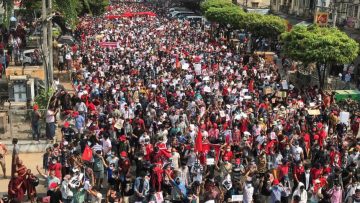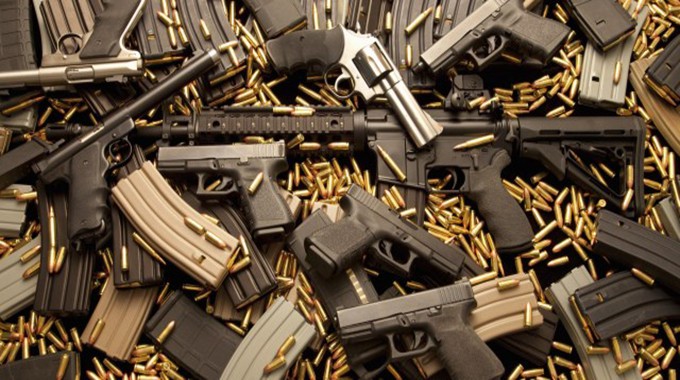The leader of the coup in Myanmar has made his first TV address, seeking to justify the action amid mass protests.
Min Aung Hlaing said November’s election, won in a landslide by the party of detained democracy leader Aung San Suu Kyi, had been unfair.
The military has begun to impose restrictions in some areas, including curfews and limits to gatherings.
Huge protests were held on Monday for a third straight day, along with a nationwide strike, to oppose the coup.
The military seized power last week after claiming, without evidence, that the election was fraudulent.
It also declared a year-long state of emergency in Myanmar, also known as Burma, with power handed over to Gen Min Aung Hlaing.
Ms Suu Kyi and senior leaders of her National League for Democracy Party (NLD), including President Win Myint, have been put under house arrest.
An Australian economic adviser to Ms Suu Kyi, Sean Turnell, has also been detained and on Monday his family posted a statement on Facebook calling for his immediate release.
Who Has Been On The Streets?
By Monday morning, tens of thousands of people had gathered in Nay Pyi Taw for the strike, with other cities such as Mandalay and Yangon also reporting significant numbers, according to BBC Burmese.
The protesters include teachers, lawyers, bank officers and government workers.
One demonstrating doctor – who did not want to be named – told the BBC;
“Today, we, professionals – especially civil servant professionals such as doctors, engineers and teachers – came out to show that we are all together in this. Our objective is the same – to make the dictatorship fall.”
Online there had been calls asking workers to skip work to protest.
“This is a work day, but we aren’t going to work even if our salary will be cut,” one protester, 28-year-old garment factory worker, Hnin Thazin, told news agency AFP.
Another protester, Hnin Hayman Soe, told the BBC she had joined the protest alongside her children, nieces and nephews.
“We can see many young people can’t accept the military junta. We can even see teenagers here,” she said.
Has It Been Peaceful?
A few injuries have been reported, but no violence.
However, a water cannon was activated in Nay Pyi Taw to disperse crowds. A video appears to show protesters rubbing their eyes and helping one another after being soaked.
Kyaw Zeyar Oo, who took the video, told the BBC that two vehicles had sprayed protesters with “no prior warning”, while “the crowd was peacefully protesting in front of [the police]”.
He added that by Monday afternoon, the situation was “totally calm” as crowds continued to gather, but the water-cannon vehicles were still present.
Over the weekend, the country saw its largest protests since the so-called Saffron Revolution in 2007, when thousands of monks rose up against the military regime. -BBC














